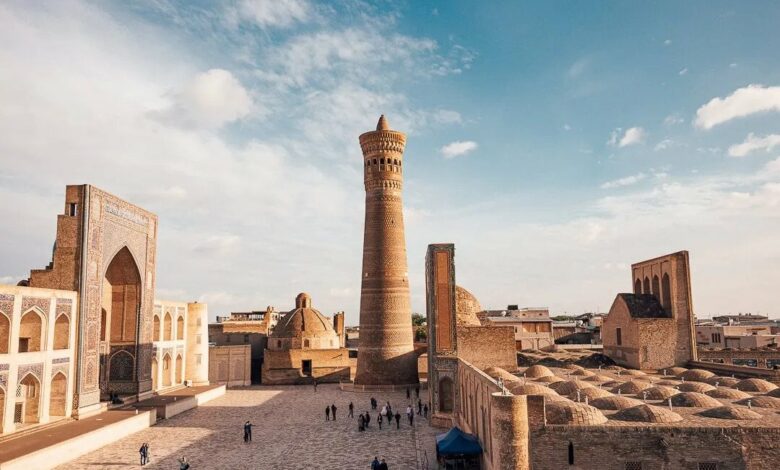From Bukhara in Uzbekistan to BRICS, Searching for Light in the Darkness of Insanity
Authored by Pepe Escobar

Bukhara The Noble, the “Dome of Islam”, with a history stretching back 2.500 years, bears too many marvels to mention: from the two-millennia-old Ark, a fortress around which the city developed, to the 48-meter high Kalon minaret, built in 1127, which so impressed Genghis Khan that he ordered it not to be razed.
The elegant, single turquoise band near the top of the minaret is the earliest example of glazed tilework all across the Heartland.
According to the Shanameh, the Persian epic, the hero Siyavush founded the city after marrying the daughter of neighbouring Afrasiab. Even before the Ancient Silk Roads were in business, Bukhara thrived as a caravan crossroads – its city gates pointing to Merv (in today’s Turkmenistan), Herat (in western Afghanistan), Khiva and Samarkand.
Bukhara’s apex was in the 9th-10th centuries under the Samanid dynasty, as it turned into a Mecca of Persian culture and science. That was the time of al-Biruni, the poet Rudaki and of course Avicenna: they all had access to the legendary Treasure of Wisdom, a library that in the Islamic world would only be rivalled by the House of Wisdom in Baghdad.
Bukhara was largely razed by Genghis Khan and the Mongols in 1220 (yes: only the minaret was spared). When the great Moroccan traveller Ibn Battuta visited in 1333, most of the city was still in ruins.
But then, in 1318, someone very special had been born in Kasri Orifon, a village outside of Bukhara. At first, he was simply known as Muhammad, after his father and grandfather, whose origins reached Hazrat Ali. But History ruled that Muhammad would eventually become famous all over the lands of Islam as the Sufi saint Bahauddin Naqshbandi.
What’s in a name? Everything. Bahauddin means “the light of religion” and Naqshbandi means “chaser”. His upbringing was enriched by several pirs (“saints”) and sheikhs living in and around Bukhara. He spent almost all his life in these oases, very poor and always relying on his own manual labour, with no slaves or servants.
Bahauddin Naqshbandi ended up founding a highly influential tariqa – Islamic school – based on a very simple concept: “Occupy your heart with Allah and your hands with work”. The concept was developed in the other 11 rules or rashas (“drops”).
A visit to the Bahauddin Naqshbandi complex outside of Bukhara centred around the tomb of the 14th-century Sufi saint who is in fact the city’s spiritual protector is an illuminating experience: such a peaceful atmosphere enveloping an appeasing network of holy stones, “wishing trees” and the odd sacrificial offering.
This is the essence of what could be defined as a parallel Islam infusing so many latitudes across the Heartland, combining an animist past with formal Islamic teachings.
At the complex, we meet scores of lovely, colourfully dressed Uzbek women from all regions and pilgrims from all over Central Asia but also from West and South Asia. Uzbek President Mirzoyoyev, extremely popular, was here late last week, and he came straight from the nearby, brand-new, airport.
This oasis of peace and meditation offers not only a sharp contrast to the toxic turbulence of the times but also inspires us to search for sanity among the madness. After all, one of Naqshbandi’s rashas states, “Our way is a conversation, good deeds are found only in mutual communication, but not in seclusion.”
So let’s apply Sufi wisdom to the upcoming, possibly ground-breaking moment that should solidify the path of the Global Majority towards a more equitable, less deranged pattern of international relations: the 15th BRICS summit in South Africa next week.




